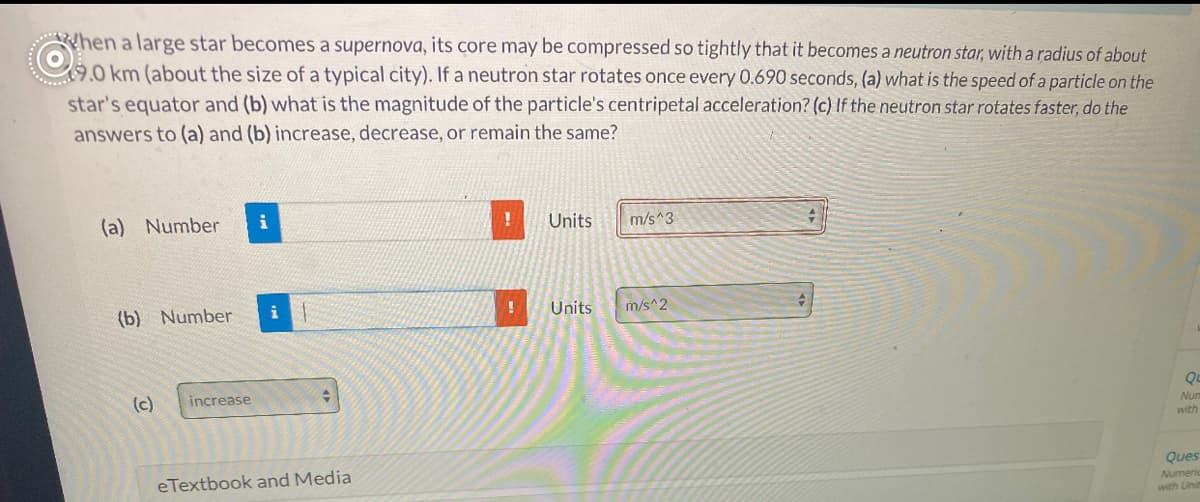hen a large star becomes a supernova, its core may be compressed so tightly that it becomes a neutron star, witha radius of about (9.0 km (about the size of a typical city). If a neutron star rotates once every 0.690 seconds, (a) what is the speed of a particle on the star's equator and (b) what is the magnitude of the particle's centripetal acceleration? (c) If the neutron star rotates faster, do the answers to (a) and (b) increase, decrease, or remain the same? (a) Number Units m/s 3 (b) Number i Units m/s^2 (c) increase
hen a large star becomes a supernova, its core may be compressed so tightly that it becomes a neutron star, witha radius of about (9.0 km (about the size of a typical city). If a neutron star rotates once every 0.690 seconds, (a) what is the speed of a particle on the star's equator and (b) what is the magnitude of the particle's centripetal acceleration? (c) If the neutron star rotates faster, do the answers to (a) and (b) increase, decrease, or remain the same? (a) Number Units m/s 3 (b) Number i Units m/s^2 (c) increase
Related questions
Question

Transcribed Image Text:hen a large star becomes a supernova, its core may be compressed so tightly that it becomes a neutron star, with a radius of about
9.0 km (about the size of a typical city). If a neutron star rotates once every 0.690 seconds, (a) what is the speed of a particle on the
....
star's equator and (b) what is the magnitude of the particle's centripetal acceleration? (c) If the neutron star rotates faster, do the
answers to (a) and (b) increase, decrease, or remain the same?
(a) Number
i
Units
m/s^3
Units
m/s^2
(b) Number
Nur
(c)
increase
with
Ques
Numen
with Linil
eTextbook and Media
Expert Solution
This question has been solved!
Explore an expertly crafted, step-by-step solution for a thorough understanding of key concepts.
Step by step
Solved in 2 steps
